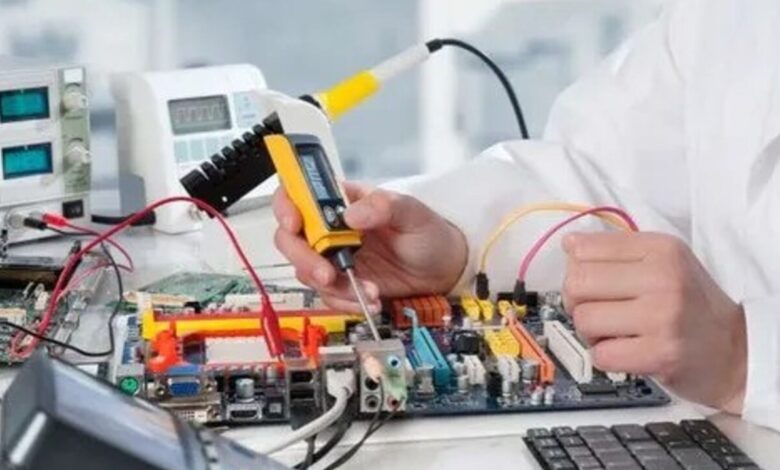How to Handle Electronic Repairs Safely

The chances are that if you’re reading this, you’re using an electronic device and the likelihood is that you’ve several different electronic devices already. Whether it’s at work or at home, electronic devices help make things easier and more efficient, simplifying complex tasks and allowing us to access new forms of entertainment.
While much of our daily life revolves around electronics, few people actually have the technical knowledge and understanding to fix them if they go wrong. In most cases, it’s easier to replace a device or take it to a repair shop. However, if you prefer to fix things yourself, it’s a good idea to learn how to do so safely. Electronic equipment can be dangerous, and you need to follow the right procedures and use safety equipment. Here are some tips on how to handle electronic repairs safely.
Safety Tools for Electronic Repairs
When carrying out a repair, you always need to make sure you have the right tools for the job. Aside from basic equipment such as screwdrivers, soldering irons and replacement parts, you should also have safety tools. Electronic items can be dangerous, even when unplugged, and you should always take proper measures to ensure they’re safe for repair.
For larger equipment, lock off kits can be used to shut the device down safely and ensure it’s not accidently turned on while you carry out repairs. These are easy to apply and help you stay safe from potential accidents such as electrocution or damage from moving parts.
You should also use a pair of safety gloves while carrying out work to protect your hands from any damage. You can get special electronic resistant gloves too, although you should still ensure the power is fully disconnected before you start working on the device even when wearing them.
Safety glasses are also a good idea when dealing with the small parts found in electronic devices. Your eyes are incredibly important yet highly sensitive, and small shavings from metal or plastic parts can cause serious damage. Always wear your safety glasses when carrying out repairs.
Paying Attention to Possible Hazards
Hazards are things which present risk and danger to you or the device. You should always consider possible hazards before you start work, thinking about the damage you could cause if something goes wrong. As long as you’re mindful of these hazards, you can reduce the potential risk.
One potential hazard when dealing with electronic repairs is capacitors. These are cylindrical components on a circuit board which look a bit like battery cells. They hold charge in a circuit, and can discharge if you touch them. While small capacitors are unlikely to be an issue, largely ones can hold big charges, which can be dangerous. Ensure you discharge them safely, using the appropriate tool and wearing rubber soled shoes.
Soldering is often used to fix electronic devices, removing broken components and adding new ones. If you’re soldering, you may need additional protection from heat and the potential fire hazards. Ensure you’re in a well-ventilated area and don’t work close to any flammable materials. Additionally, it’s important to tie back any long hair and avoid wearing loose clothing.
Some printed circuit boards contain heavy metals such as mercury or lead which can be dangerous if ingested. Before and after carrying out any work on a device, ensure you wash your hands carefully. You should also avoid eating or drinking while carrying out repair work. Not only can this be dangerous, but you could also damage the components. You can use gloves for added protection, with thin nitrile gloves still allowing you to use precise tools.





